Text
ARTIFICIAL INTELLIGENCE VS MACHINE LEARNING : A CLARIFICATION
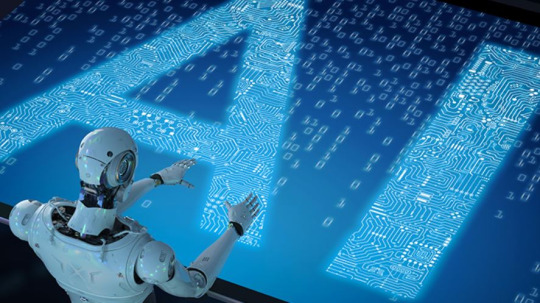
Artificial Intelligence vs Machine Learning
There is not a real difference between Artificial Intelligence vs Machine Learning.
Artificial Intelligence is, in general, the science whose goal is to optimize a machine to do better what it does, executing an algorithm whose aim is to minimize errors. This is possible through continuous measurements, by sensors, of the performance of the machine, or, in other words, of what the machine is doing and how well is doing it.
This is why this science is called Artificial Intelligence: the machine is like to be conscious of what it is doing. But actually, it is not, there is nothing really intelligent.
We will see later some examples that will better clarify this introduction.
[link below]
ScienceFull.
0 notes
Text
Artificial Intelligence in Space applications
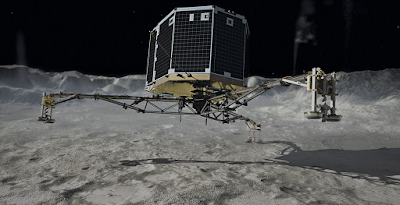
What's the role of Artificial Intelligence in Space applications ?
As we have seen in other articles, the general role of Artificial Intelligence is that of optimizing some functions to be able to perform them with the minimum error or adapt some behaviours of a machine to an unpredictable situation, namely, a situation that is difficult to be predicted during the design phase and that gives us some uncertainties.
The role of Artificial Intelligence in Space applications is exactly the same: it is used to optimize some functions, performance and adapt a machine to unpredictable, uncertain situations.
In this article, I will present a particular example of how Artificial Intelligence in Space applications is used. In particular, we will see how an automatic lander for comet/asteroids works, adapting itself to really uncertain conditions, difficult to predict during the design phase.
[ link below ]
ScienceFull.
#artificial intelligence in space applications#artificial intelligence applications#artificial intelligence#space#space applications
0 notes
Text
Artificial Intelligence in Digital Marketing

In this article I will give you a general and simple idea of how Artificial Intelligence in Digital Marketing works, explaining why understanding it could be really helpful to take better decisions for Marketing purpose, improving results.
The Importance of Artificial Intelligence in Digital Marketing
The impact of Artificial Intelligence in Digital Marketing is huge.
Artificial Intelligence in Digital Marketing allows optimizing the public who will see products and services that a vendor wants to sell. It allows contents and advertisements to reach a potential buyer in a very targeted way. In particular, we are talking about Machine Learning, the branch of Artificial Intelligence whose algorithms are based on possessing a sufficient amount of data.
As we know, all Internet services like Google, Facebook Ads and so on have a big database in which navigation data about every person that signed up are contained. All this data allow the algorithm to target a specific potential buyer.
Let make an example that will clarify how Artificial Intelligence in Digital Marketing works.
Example of Artificial Intelligence in Digital Marketing
[ content on link below ]
With this experiment you’ll better figure out what is written in this article, understanding that knowing the basic working principle of Artificial Intelligence in Digital Marketing can make the difference.
ScienceFull.
0 notes
Text
L’ INCIDENTE AEREO PIU` FORTUNATO
L'incidente piu` famoso e` quello del Boeing 737 del volo Aloha Airlines 243, 28 Aprile 1988.

L'incidente avvenne ad una quota di ben 7300 m.
Un'intera parte di fusoliera fu persa a causa di una frattura propagatasi a causa dei carichi a fatica (ciclici) dovuti ai cicli di pressurizzazione della fusoliera, i cosiddetti cicli GAG, Ground-Air-Ground.
La frattura nacque nei pannelli della fusoliera, in corrispondenza dei rivetti di giunzione. I pannelli avevano subito un peggioramento delle performance strutturali a causa di corrosione, non identificata. Il velivolo, infatti, era solito sostare in aeroporti marittimi nelle isole Hawaiane.
L'aereo riusci` ad atterrare e solo un componente dell'equipaggio perse la vita.
La corrosione e` un fenomeno generato dall'esposizione di un metallo (lega di alluminio in questo caso) all'ossigeno ambientale. Gli atomi della superficie di metallo reagiscono con gli atomi di ossigeno, creando legami con esso e formando cosi` ossidi di metallo. Ne consegue un cambiamento delle proprieta` fisico-chimiche ed un peggioramento delle proprieta` meccaniche del materiale (perdita di resistenza).
Cosa sono i cicli GAG?
La cabina di un velivolo viene tenuta in pressione. Questo perche` quando si sale in quota la pressione atmosferica non e` sufficiente a permettere la respirazione. La pressione dell'ossigeno esterno e` troppo bassa perche` i polmoni riescano ad inspirarlo.
Questa e` la nostra fusoliera vista di fronte prima del decollo:
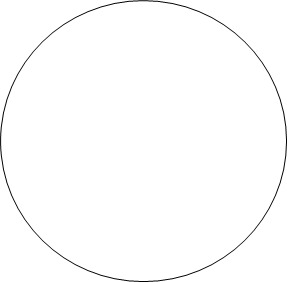
Quando saliamo in quota, la pressione esterna diminuisce. La fusoliera invece viene mantenuta ad una pressione piu` elevata per permettere la respirazione, come detto prima. Quindi, la pressione interna e` piu` elevata di quella esterna. Il risultato e` che le pareti vengono spinte verso l'esterno, esattamente come succede quando gonfiamo un palloncino.
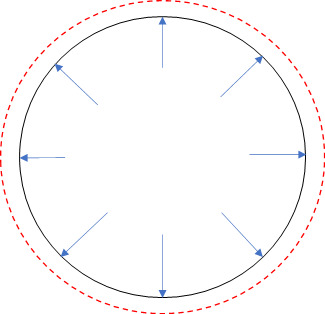
Quando incominciamo a scendere di quota per apprestarci all'atterraggio, la pressione esterna aumenta e le pareti della fusoliera tornano verso la posizione iniziale.

Questo ciclo si ripete ad ogni viaggio, "affaticando" la struttura della fusoliera. Superato un certo numero di cicli, la struttura cede. Ovviamente una fusoliera e` progettata per resistere lungo l'intera vita del velivolo e con dei bei margini di sicurezza.
Nei sottomarini si verifica esattamente l'opposto.
La fatica e` quindi uno dei vincoli piu` importanti nella progettazione di una fusoliera. I finestrini degli aerei hanno gli spigoli "arrotondati" per questo motivo.

Spigoli piu` vivi, infatti, diminuiscono notevolmente la vita di un componente sottoposto a fatica. L'incidente catastrofico del Comet, nel 1954, ne fu la prova piu` eclatante.


Spero di essere stato utile,
Saluti!
0 notes
Text
STAMPA 3D CON I METALLI
Come funziona la stampa 3D con il metallo?
Ciao!
Esistono diverse tipologie di Metal Additive Manufacturing, che si dividono in due macroclassi:

Directed Energy Deposition (DED):
E` composta da una testa da cui fuoriesce un raggio laser, o ad elettroni, o al plasma. Sulla stessa testa e` installato un sistema in pressione da cui la polvere di metallo viene spruzzata in modo tale che colpisca il raggio e venga fusa. Sia la testa che il componente possono muoversi. E` possibile usare , invece che la polvere, un filamento, meno costoso ma che restituisce una qualita` inferiore (immagine a destra).
Alza il volume!
https://www.youtube.com/watch?v=oL7bMhPTtDI
Powder Bed Fusion:
si dispone un letto di polvere e si fonde il materiale solo dove necessario. Una volta fuso il materiale si dispone un nuovo strato di polvere e cosi` via.

A seconda della sorgente di energia si parla di:
1. Selective Laser Melting (SLM):
La sorgente e` un laser e la camera in cui lavora viene riempita con gas inerte, per evitare combustione o esplosioni. La testa si muove, il componente sta fermo. Il Selective Laser Sintering (SLS) e` simile, il materiale non viene pero` portato a fusione ma viene, appunto, sinterizzato (temperature piu` basse di quella di fusione).
Le dimensioni massime raggiungibili sono di (600x400x500) mm^3.
https://www.youtube.com/watch?v=te9OaSZ0kf8
2. Electron Beam Melting (EBM):
La sorgente e` una pistola ad elettroni. E` composta da un catodo in tungsteno che viene scaldato fino a temperature superiori a 2000°C, (la temperatura di fusione del tungsteno e` di 3400°C circa, per questo si usa questo metallo) emettendo cosi` elettroni che vengono accelerati tramite l'applicazione di una tensione (V o Volt) tra il catodo stesso e un anodo posto piu` sotto.

In questo modo si emette un fascio di elettroni che viene poi focalizzato tramite un disco repulsivo (un magnete) e raggiunge infine il materiale, fondendolo.
Il fascio di elettroni puo` essere orientato attraverso un campo magnetico con conseguente assenza di attrito (non ci sono parti in movimento). Cio` rende questa tecnologia piu` veloce, ma anche piu` costosa (non meno di un milione di euro).
La camera deve essere tenuta sotto vuoto e raggiunge temperature di circa 1000 °C. Lavorare a temperature cosi` elevate permette di ridurre gli stress termici residui.
Le dimensioni massime raggiungibili sono di (350x350x380) mm^3.
https://www.youtube.com/watch?v=CUeDevI6kyE
I principali parametri che influenzano la qualita` di un componente realizzato in Additive Manufacturing sono:
Densita` di energia: bisogna settare la giusta potenza della sorgente, la giusta velocita`, la giusta distanza, di modo che il materiale non vaporizzi o cambi le sue proprieta` chimiche (troppa energia) o da evitare mancanze di fusione completa (energia insufficiente). La qualita` finale viene misurata confrontando la massa del componente finale con quella attesa teoricamente: in generale, infatti, i componenti realizzati in Additive Manufacturing sono meno densi di quelli realizzati con tecnologie CNC, a causa delle maggiori inclusioni di aria. Cio` comporta caratteristiche meccaniche inferiori.
Polvere: composizione chimica, dimensioni (si arriva al nanometro), morfologia, proprieta` fisiche, storaggio, riutilizzabilita` e pericolosita`. La polvere di alluminio costa 30 €/Kg, quella di acciaio 70 €/kg, quella di titanio 150 €/Kg, quella di NiTiNOL 700 €/Kg (valori indicativi);
Direzione di deposizione o scannerizzazione: influenza l'orientazione del materiale con conseguente comparsa di anisotropia (proprieta` meccaniche differenti nelle diverse direzioni). Influenza quindi le caratteristiche meccaniche del componente. Con l'esperienza sono state individuate le strategie di deposizione e scannerizzazione ottimali.
Rugosita`: si ottengono componenti piu` rugosi rispetto a tecnologie tradizionali (CNC), soprattutto quando si realizzano superfici inclinate nella direzione che vedi in figura (quando salendo ci si allarga, per dirla in un modo che spero si comprenda). Oltre un certo angolo di inclinazione, sono necessari supporti. Sono quindi necessari processi di finitura successivi.

L'Additive Manufacturing su metalli e` una tecnologia competitiva, in termini di tempo e soprattutto costo, solo per la realizzazione di pochi pezzi, con geometria molto complessa non ottenibile altrimenti.

Per grandi lotti e geometrie piu` semplici le tecnologie CNC sono ancora dominanti.
Come vedi, non e` la stessa cosa di fondere della resina.
Spero di essere stato utile,
Saluti!
3 notes
·
View notes
Text
3D METAL PRINTING
There are different types of Metal Additive Manufacturing technologies, here are the most important.
Directed Energy Deposition (DED):
It is composed by a head from where a laser, or a electron or a plasma ray exits. On the head, a pressurized system is installed, from where metal powder is ejected in a way that hits the ray and melting occurs. Both the head and component can move. It is possible to use, instead of powder, a filament, cheaper but that gives lower quality.
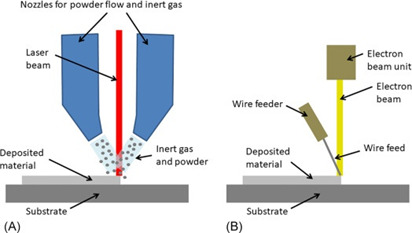
Turn up the volume!
https://www.youtube.com/watch?v=oL7bMhPTtDI
Powder Bed Fusion:
A powder bed is deposited and material is melted only where necessary. Once the material is melted, another layer of powder is deposited, and so on.
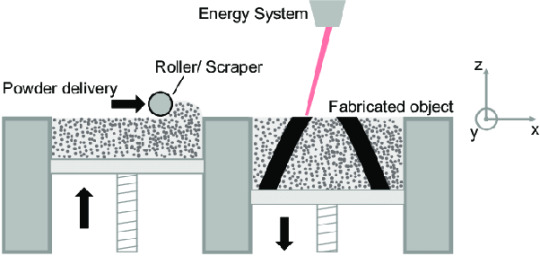
Depending on the energy source, we speak of:
1. Selective Laser Melting (SLM):
The source is a laser and the working chamber is filled with inert gas, to avoid combustion or explosions. The head moves, the component is fixed. Selective Laser Sintering (SLS) is similar, but the material is not really melted, is sinterized (lower temperatures).
Maximum obtainable dimensions are (600x400x500) mm^3.
https://www.youtube.com/watch?v=te9OaSZ0kf8
2. Electron Beam Melting (EBM):
The source is an electron gun. It is composed by a cathode made of tungsten that is heated until it reaches temperature higher than 2000 °C, (melting point of tungsten is about 3400 °C, this is why tungsten is used) emitting electrons than are accelerated through the application of a voltage (V or Volt) between the same cathode and an anode collocated below.

In this way, an electron beam is emitted, that is focused through a repulsive disk (a magnet) and reaches the material, melting it.
The electron beam can be oriented through a magnetic field, removing any moving part and so, any friction. This makes this technology faster but also more expensive (not less than 1 million euros).
The chamber has to be taken under vacuum and at a temperature of 1000 °C. Working at these temperature reduces thermal stresses.
Maximum obtainable dimensions are (350x350x380) mm^3.
https://www.youtube.com/watch?v=CUeDevI6kyE
The main parameters that infleunce the quality of a component obtained with Additive Manufacturing are:
Energy density: we have to set the right power of the source, the right speed, the right distance, avoiding material vaporization or chemical composition changes (too much energy) or lack of fusion (too low energy). The quality of the component is measured comparing the final mass with the expected from theory one: in fact, generally speaking, components obtained with AM have a lower density than ones obtained through CNC technologies, because of the higher air inclusions. This results in lower mechanical porperties;
Powder: chemical composition, dimensions (we can reach nanometers), morphology, physical properties, storaging, reutilizability and dangerousness. Aluminum powder cost is 30 €/Kg, Steel 70 €/kg, Titanium 150 €/Kg, NiTiNOL 700 €/Kg (approximate values);
Deposition strategy: it influences material orientation, resulting in a material anisotropy (different mechanical properties in different directions). In conclusion, it influences the mechanical properties of the component;
Rugosity; we obtain higher rugosity than in traditional technologies (CNC). Surface post processing is necessary.
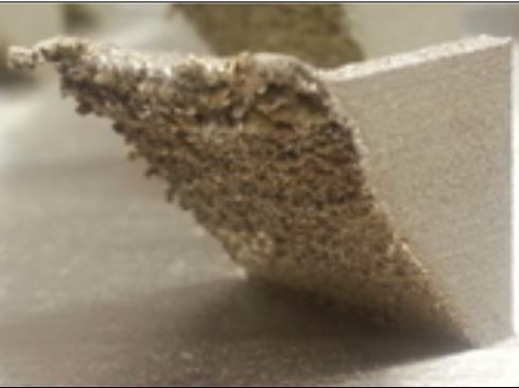
Metal Additive Manufacturing is a competitive technology, considering time and costs, only for low numbers of components, with very complex geometries that are not obtainable with other technologies.
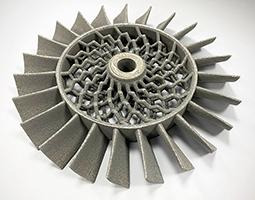
For big lots and simpler geometry, CNC technologies are still the best choice.
Regards!
#engineering#3dprinting#metal 3d printing#additive manufacturing#metals#aerospace#mechanical#mechanical engineering#aerospace engineering#material#materials engineering#technology#structural engineering#machinery#engineering student#engineering university#aeronautical#egineering students
8 notes
·
View notes